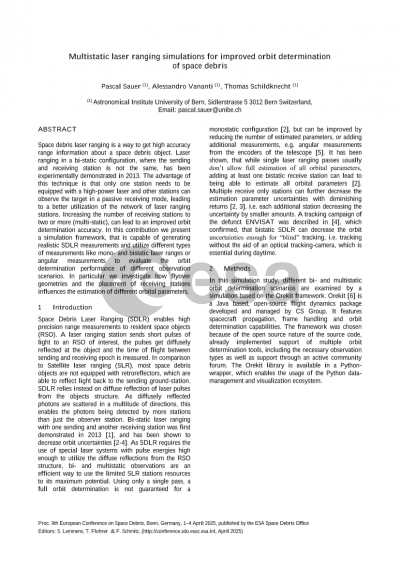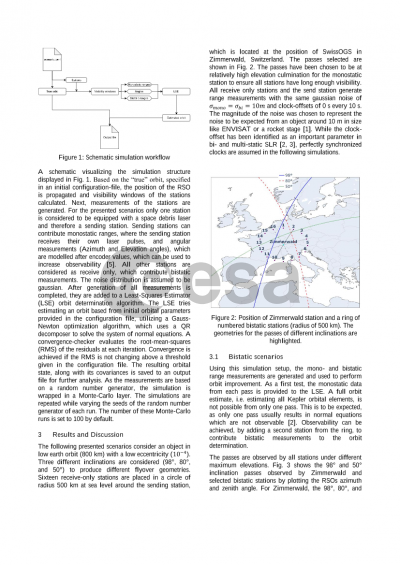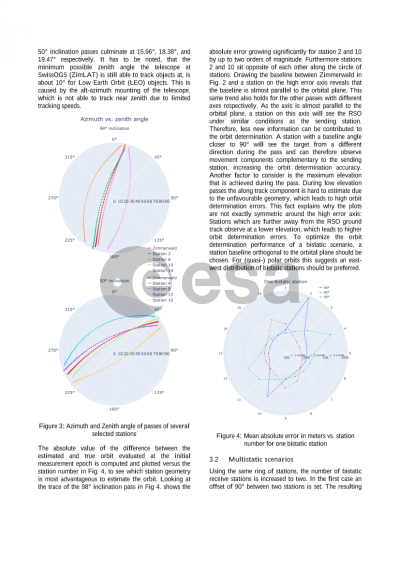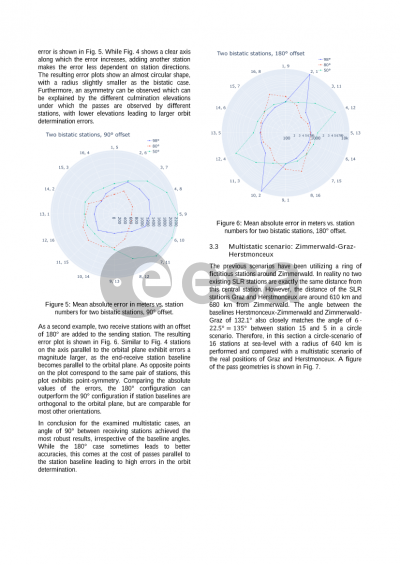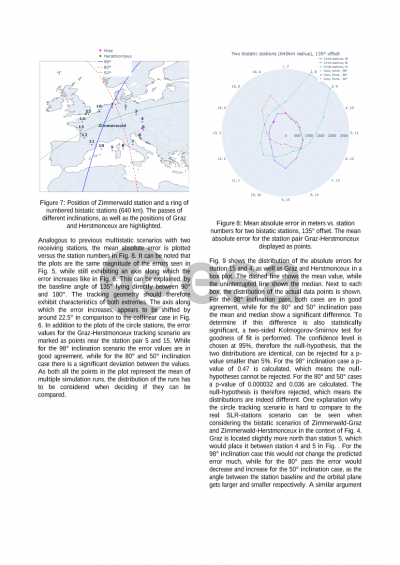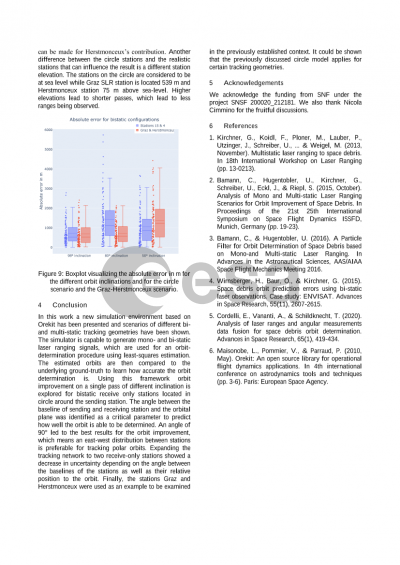Document details

Abstract
Space debris laser ranging (SDLR) is a way to get high accuracy range information about a space debris object. A laser ranging station sends short pulses of light to a space debris object of interest, the pulses get diffusely reflected at the object and the time of flight between sending and receiving epoch is measured. Due to the light being diffusely reflected by the space debris, as most objects are not equipped with retro-reflectors, SDLR requires a powerful laser to ensure enough signal can be detected at the ground-station. Laser ranging in a bi-static configuration, where the sending and receiving station is not the same, has been experimentally demonstrated in 2013. The advantage of this technique is that only one station needs to be equipped with a high power laser and other stations can observe the target in a passive receiving mode, leading to a better utilization of the network of laser ranging stations. Increasing the number of receiving stations to two or more (multi-static), can lead to an improved orbit determination accuracy.
In this contribution we present a simulation framework, that is capable of generating realistic SDLR measurements and utilize different types of measurements like mono- and bistatic laser ranges or angular measurements to evaluate the orbit determination performance of different observation scenarios. In particular we investigate how flyover geometries and the placement of receiving stations influences the estimation of different orbital parameters.
The simulation parameters are chosen to represent the SDLR system currently being tested in at the Swiss Optical Ground Station and Geodynamics Observatory (SwissOGS) in Zimmerwald. This system consists of a Nd:YAG laser running at 1064 nm, a pulse length of 8 ns and 100 Hz repetition rate.
Preview
